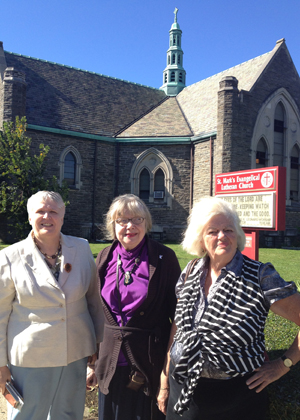 The lesson today is about creating boundaries.
The lesson today is about creating boundaries.
Today’s object is a goldfish in a bowl.
In Mark 9:38-50, the disciples are upset with some copycat miracle workers who are exorcising demons in Jesus’ name. The disciples bring the matter to Jesus’ attention. Someone is stepping on your (they probably meant “our”) territory.
Hey! They had tried to stop them. But the scoundrels just weren’t listening! Surely, Jesus would put the demon chasers in their place.
The disciples wanted Jesus to draw a line — decide who were the true followers of Christ. Keep the kingdom tidy.
But Jesus dismisses the disciples’ concerns. He focuses on them.
He encourages the disciples to loosen up. These new miracle workers aren’t going to diminish His abilities. Why bother drawing lines between people who are working for the same cause?
Here’s a little known fact about goldfish. They were naturally plain old, grey carp.
Japanese and Chinese hobbyists carefully bred their pets to bring out the bright colors.
Today, goldfish are known for their splendor.
And where did it get them? Today most of the beautiful goldfish, chosen for their color and carefully bred to ensure colorful offspring, are kept in a bowl. The chosen fish are destined to live their lives separated from other fish and the world. They will swim all day, every day, in circles peering through their concave barriers at the world they were part of back when they were grey. Their beauty has indeed set them apart — to what end?
Talk with your congregation about the walls they might be putting up between themselves and the rest of God’s glorious creation. Why do the barriers seem like a good idea? When the harshest barriers are at last broken, what result was feared? What result actually came about?
- The walls between faiths.
- The walls between denominations.
- The walls between genders and races.
- The walls between educated workers and manual labor.
- The walls between old and young.
- The walls of culture and language.
Think about the disciples. Did their special status as chosen children of God divide them from the world or prepare them to join the world?
What about us? What walls do we put up? What purpose do we think they serve? What unintentional purposes result?



